Disclosure: This article contains affiliate links. We may earn a commission from purchases at no extra cost to you, which helps our travel content.
After three decades navigating the corridors of urban planning and policy development, I've developed a particular appreciation for spaces where governance, conservation, and tourism intersect harmoniously. The Lower Zambezi National Park in Zambia represents such a triumph—a masterclass in sustainable wildlife management that delivers unparalleled luxury experiences without compromising the integrity of one of Africa's most pristine ecosystems. This past summer, I embarked on a two-week expedition to this remarkable corner of the continent, where the mighty Zambezi River carves a dramatic valley between Zambia and Zimbabwe, creating a sanctuary for some of Africa's most magnificent wildlife. What transpired was not merely a vacation but a profound education in conservation economics and responsible tourism that I'm compelled to share with fellow travelers seeking meaningful engagement with our planet's wild spaces.
The Strategic Advantage of Lower Zambezi
The Lower Zambezi National Park occupies a unique position in the safari landscape of Southern Africa. Unlike its more trafficked counterparts in Kenya, Tanzania, or even South Africa's Kruger, this 4,092 square kilometer sanctuary remains relatively unburdened by mass tourism—a deliberate outcome of Zambia's thoughtful tourism development strategy.
The park's location across the river from Zimbabwe's Mana Pools creates an expansive transfrontier conservation area where animals move freely across international boundaries, a testament to regional cooperation in wildlife management. This cross-border ecosystem approach has yielded remarkable conservation successes while providing visitors with extraordinary wildlife density without the vehicle congestion common in more established safari destinations.
During my stay, I often found our vehicle to be the only one at spectacular wildlife sightings—a pride of lions lounging beneath acacia trees, a leopard draped elegantly over a sausage tree branch, or a herd of elephants crossing the Zambezi at sunset. This exclusivity isn't merely a luxury amenity; it fundamentally transforms the quality of wildlife observation and photography.
For serious wildlife enthusiasts, I recommend investing in quality optics. My binoculars proved invaluable for spotting distant wildlife and appreciating minute behavioral details that would otherwise remain invisible. While the price point is substantial, the optical clarity and durability make them a worthwhile investment for frequent safari-goers.

💡 Pro Tips
- Book your safari at least 12 months in advance to secure the best camps during peak season (June-October)
- Request the same guide throughout your stay for continuity in wildlife tracking and observation
- Consider splitting your time between riverside and inland camps for diverse ecosystems and wildlife viewing
Luxury Accommodations: Conservation Through Commerce
The Lower Zambezi exemplifies how luxury tourism can drive conservation outcomes when properly structured. The park's concession model allows for limited, high-value tourism operations that generate substantial revenue for conservation initiatives while minimizing ecological impact.
I divided my stay between three exceptional properties, each offering distinct perspectives on the park's diverse ecosystems. Chiawa Camp, one of the region's pioneering establishments, impressed me with its seamless integration of luxury and sustainability. The family-owned operation maintains deep connections with local communities, employing and training residents while supporting educational initiatives in surrounding areas.
Anabezi, situated on the eastern boundary, offers an architectural marvel of elevated tented suites with expansive views across the floodplains. Their commitment to renewable energy—the entire camp runs on solar power—demonstrates how luxury and environmental responsibility can coexist.
Perhaps most impressive was Time + Tide Chongwe River House, an architectural masterpiece available for exclusive use. The four-bedroom villa, inspired by the organic forms of termite mounds, blends harmoniously with its surroundings while providing unparalleled comfort. From the open-air bathtubs to the private plunge pool overlooking a game-rich channel of the Zambezi, every detail reflects thoughtful design that honors the setting.
For capturing the magic of these accommodations and wildlife encounters, I relied heavily on my camera with a versatile zoom lens. The camera's exceptional low-light performance proved invaluable during dawn and dusk game drives when wildlife is most active but lighting conditions are challenging.

💡 Pro Tips
- Request rooms furthest from common areas for the best wildlife viewing directly from your accommodation
- Pack lightweight, neutral-colored clothing that can be layered for variable temperatures
- Bring a quality headlamp with a red light setting for navigating camps at night without disturbing wildlife
Wildlife Encounters: Beyond the Big Five
While many safari destinations promise the iconic Big Five, Lower Zambezi offers something arguably more valuable: intimate, prolonged wildlife encounters in varied contexts. The park's unique geography—with the Zambezi River forming its northern boundary and the dramatic escarpment of the Zambezi Valley to the south—creates a compressed wildlife corridor of extraordinary density.
Canoe safaris represent the park's signature experience. Gliding silently along the river's channels in a traditional mokoro provides a perspective impossible to achieve from a vehicle. During one particularly memorable morning, we drifted within respectful distance of a breeding herd of elephants crossing between islands, their trunks raised like periscopes as younger calves navigated the current.
The park hosts impressive predator populations, including several well-habituated lion prides and leopards. Unlike some reserves where predator sightings feel rushed and crowded, here I observed a female leopard for nearly three hours as she hunted, failed, groomed, and eventually succeeded in catching an impala—a complete behavioral sequence rarely witnessed in more trafficked parks.
Birdlife enthusiasts will find the Lower Zambezi particularly rewarding, with over 350 recorded species. The combination of riverine habitats, mopane woodlands, and acacia thickets creates diverse avian ecosystems. The carmine bee-eaters, which establish massive nesting colonies in the riverbanks between September and November, create one of Africa's most spectacular natural displays.
For wildlife photography enthusiasts, I recommend bringing a telephoto lens to capture detailed images of distant subjects without disturbing natural behaviors. The versatile zoom range proved perfect for everything from landscape compositions to intimate wildlife portraits.
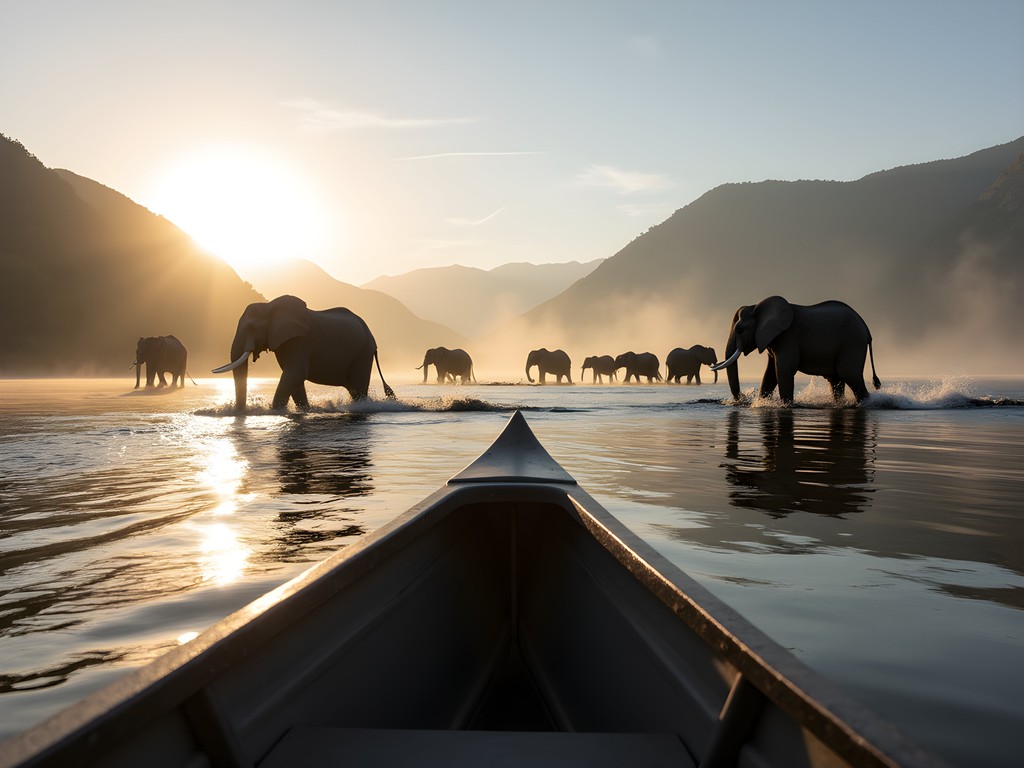
💡 Pro Tips
- Request specialized wildlife activities like night drives and walking safaris, which are permitted in Lower Zambezi unlike some other parks
- Bring a small notebook to record wildlife sightings and behaviors—guides appreciate engaged visitors
- Morning game drives typically yield the most productive predator sightings as they're often active after night hunts
Conservation Governance: A Model Worth Studying
As someone who has spent decades in public policy, I found the governance structure supporting Lower Zambezi's conservation efforts particularly fascinating. The park operates through a collaborative model between Zambia's Department of National Parks and Wildlife, private concession holders, and non-profit conservation organizations.
Conservation Lower Zambezi (CLZ), a local NGO, serves as the park's primary conservation partner, operating anti-poaching units, conducting research, and implementing community education programs. During my visit, I arranged a behind-the-scenes tour of their headquarters, where dedicated staff monitor wildlife movements, coordinate anti-poaching patrols, and analyze ecological data.
What impressed me most was the transparent revenue-sharing model that ensures tourism dollars directly support conservation activities and community development. Each visitor pays conservation fees that fund ranger salaries, equipment, and operations. Meanwhile, concession fees from luxury camps support infrastructure development in surrounding communities.
The results speak for themselves: elephant populations are stable after years of poaching pressure, predator numbers are increasing, and human-wildlife conflict in buffer zones has decreased significantly. This success stems not from excluding local communities but rather from making them stakeholders in the conservation enterprise through employment, education, and economic opportunity.
For visitors interested in conservation, I recommend bringing a field guide to enhance your understanding of the complex ecological interactions you'll witness. Knowledge of behavioral ecology transforms casual wildlife viewing into meaningful observation, and guides appreciate guests who show genuine interest in the ecosystem's intricate relationships.

💡 Pro Tips
- Request a visit to Conservation Lower Zambezi headquarters to learn about their anti-poaching and community outreach programs
- Ask your lodge about their specific conservation initiatives and how tourism dollars support these efforts
- Consider making an additional donation to local conservation organizations, which can be earmarked for specific programs
Beyond Game Drives: Diverse Safari Activities
The Lower Zambezi distinguishes itself through the remarkable diversity of wildlife viewing options available to visitors. While traditional game drives remain the backbone of the safari experience, the park's riverside location enables water-based activities that provide entirely different perspectives on the ecosystem.
Tiger fishing represents a particular highlight for sporting enthusiasts. The Zambezi River hosts the aggressive tigerfish, renowned for its fighting spirit and distinctive teeth. Catch-and-release fishing expeditions can be arranged through most camps, with the prime season running from September through October when water levels are optimal.
Walking safaris offer perhaps the most profound shift in perspective. Accompanied by an armed guide and a national parks scout, these foot explorations transform how you perceive the landscape. Suddenly, the smallest details—tracks, scat, insect activity, plant adaptations—reveal stories invisible from a vehicle. I participated in a half-day walking safari that culminated in a surprise breakfast set up beneath a massive winter thorn acacia, complete with fresh coffee and made-to-order omelets.
Night drives, permitted within the park, unveil an entirely different cast of characters. Equipped with red-filtered spotlights that don't disturb wildlife, we encountered genets, civets, honey badgers, and an elusive serval—species rarely seen during daylight hours.
For these varied activities, particularly walking safaris, appropriate footwear is essential. My hiking boots provided the necessary ankle support and protection while remaining comfortable in the heat. The waterproof feature proved valuable during early morning walks through dew-covered grass and shallow stream crossings.
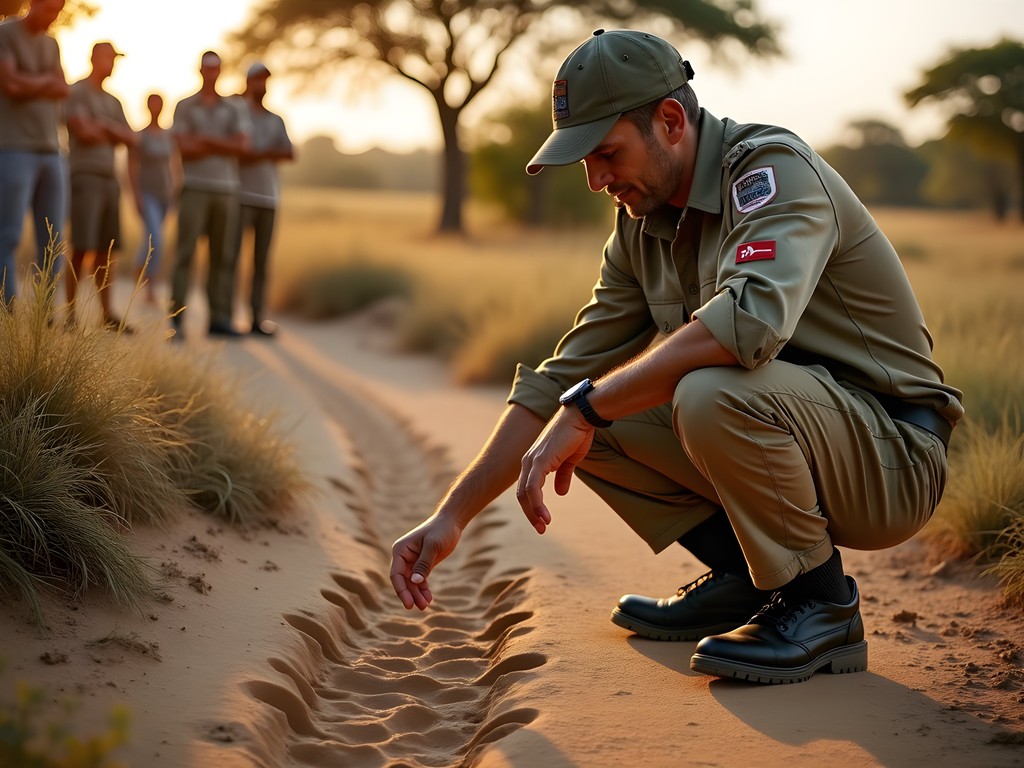
💡 Pro Tips
- Request a private guide and vehicle if your budget allows—this flexibility enables you to focus on your specific interests
- Alternate morning and afternoon activities between land and water to experience the full range of ecosystems
- Consider booking a multi-day canoe trail for a truly immersive wilderness experience (advanced planning required)
Final Thoughts
As I departed Lower Zambezi after two transformative weeks, I reflected on how this remarkable place represents a conservation governance success story worth studying and replicating. Here, the often competing interests of wildlife protection, community development, and luxury tourism have achieved a delicate yet effective balance. For couples seeking a safari experience that transcends the ordinary—one that combines unparalleled wildlife encounters with meaningful insights into conservation economics—Lower Zambezi offers a compelling destination. The park's commitment to limited visitor numbers ensures its pristine character will remain intact for generations to come, while its model of sustainable luxury demonstrates how responsible tourism can drive positive conservation outcomes. I encourage you to experience this extraordinary place, not merely as observers but as participants in one of Africa's most successful conservation initiatives. The memories of elephants silhouetted against the sunset, leopards lounging in sausage trees, and the rhythmic pulse of the Zambezi will remain with you long after your return home.
✨ Key Takeaways
- Lower Zambezi offers intimate wildlife encounters without the crowds of more famous safari destinations
- The park's governance model successfully balances conservation, community development, and tourism
- Water-based activities like canoeing provide unique perspectives impossible in other safari destinations
- Luxury accommodations demonstrate how high-end tourism can support rather than detract from conservation efforts
- Advance booking is essential due to the limited number of beds available in this pristine wilderness
📋 Practical Information
Best Time to Visit
June through October (dry season)
Budget Estimate
$800-1,500 per person per night all-inclusive
Recommended Duration
7-14 days
Difficulty Level
Moderate To Challenging


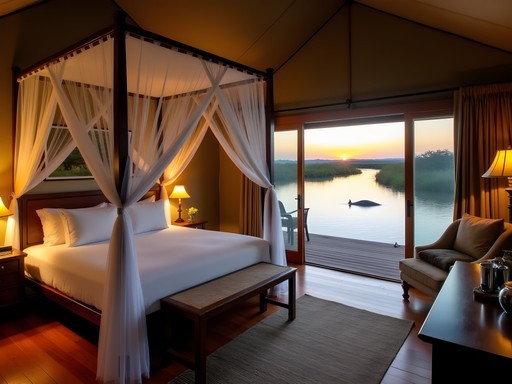
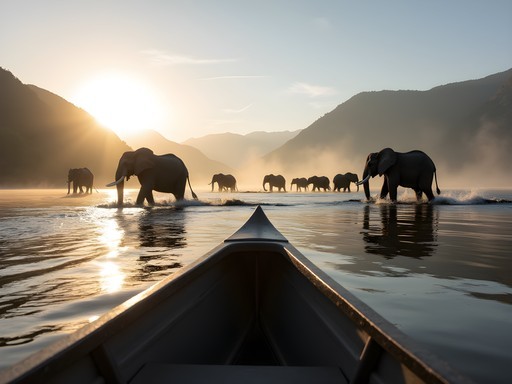



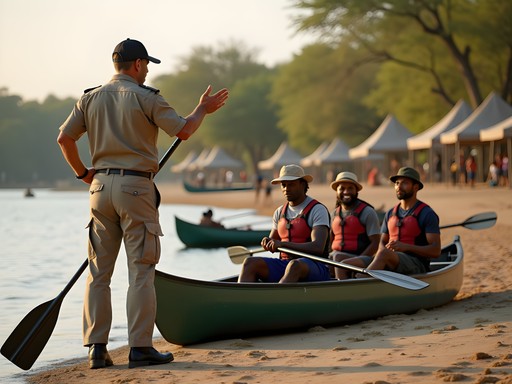





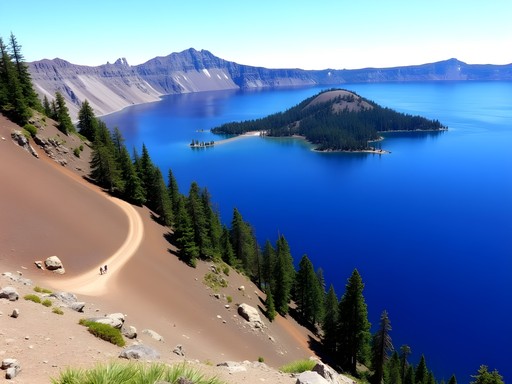

Comments
waveway
Going in August! So excited after reading this!
smartlife
You'll have an amazing time! Don't forget binoculars - essential for bird watching along the river.
ZambiaLover
Just got back from Lower Zambezi last month and everything David wrote is spot on. The conservation model there deserves more attention globally. We stayed at Anabezi and saw leopards three days in a row! The canoe safaris were a highlight - nothing like silently gliding past hippos and elephants. One tip I'd add: bring binoculars for everyone in your group. The guides have some to share but having your own pair makes a huge difference, especially for birding. The carmine bee-eaters nesting in the riverbanks were spectacular.
FirstTimerSafari
Did you feel safe during the canoe safari? I'm a bit nervous about hippos...
ZambiaLover
Totally safe! The guides are incredibly experienced and know exactly how to navigate around hippo pods. They keep a respectful distance and understand hippo behavior perfectly. You're in good hands!
Sarah Powell
Excellent analysis of Lower Zambezi's unique position in the safari landscape. I visited last September as part of my comparative study of conservation areas across Southern Africa. One thing worth highlighting is the seasonal variations - I found September-October optimal as wildlife concentrates along the river when inland water sources dry up. The thermal contrast between the valley floor and escarpment creates fascinating weather patterns too. For those interested in the conservation governance aspect, I recommend requesting a meeting with park management in advance - they're often willing to share insights on their operational challenges and successes.
David Boyd
Great point about seasonal timing, Sarah. I was there in early dry season and already seeing concentration effects. And yes - the park management team was incredibly transparent about their challenges, especially regarding human-wildlife conflict in buffer zones.
TravelingAccountant
That sunset photo over the Zambezi is incredible! What camera did you use?
greenfan9633
Those wild dog sightings! So jealous. Tried for years to see them in Kruger with no luck.
coolguy
Great post! For anyone planning to visit, don't skip the walking safaris - totally different experience from the vehicle tours. Our guide Francis could identify birds just by their calls and showed us how to track animals by their footprints. Also, the canoeing was WAY better than I expected. Seeing hippos from that perspective is both terrifying and amazing!
smartlife
Your section on conservation governance was SO insightful! I've been following the development of the Lower Zambezi protection initiatives for years and it's truly a model for how tourism can support wildlife protection. Did you get a chance to talk with any of the anti-poaching teams? Their dedication is incredible. I'm heading back for my third visit in November and can't wait!
SafariDreamer
How's the mosquito situation in Lower Zambezi? Worth bringing a portable mosquito net?
moonchamp
all the camps provide nets over the beds. but bring lots of repellent for sure.
Riley Griffin
We took our kids (10 and 12) to Lower Zambezi last year and it was the highlight of our Africa trip! The guides at Chiawa Camp were incredible with the children, turning every game drive into an educational adventure. My daughter still talks about the elephant family we watched cross the river at sunset. One tip for families considering this destination: many lodges have age restrictions, but several (like Royal Zambezi) are more family-friendly. Also worth noting that some camps offer private vehicles for families, which gives you flexibility with timing around kids' needs and interests.
Taylor Moreau
David, excellent analysis of the conservation governance model in Lower Zambezi. I've been studying similar approaches in Rwanda and Botswana for a comparative analysis on sustainable tourism economics, and your observations align perfectly with what we're seeing across the continent. The balance between luxury tourism revenue and conservation funding is delicate but crucial. I particularly appreciated your insights on how the local communities are integrated into the conservation efforts - this is often the missing piece in many wildlife management models. I'll be referencing some of your observations in my upcoming presentation at the Sustainable Tourism Summit in Cape Town.
David Boyd
Thank you, Taylor! I'd be very interested in your comparative analysis. The community integration aspect was indeed the most impressive part of the Lower Zambezi model - particularly how they've created career pathways beyond just service positions. Please do share your presentation when it's available.
Venture X
Premium card with 2X miles, $300 travel credit, Priority Pass